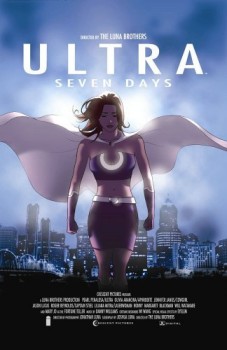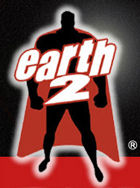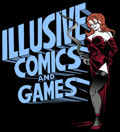| Ultra:
Seven Days
I am rarely
amazed when it comes to comic books. I suppose I have very
little business being jaded at the tender age of twenty-two,
but I’ve been reading comic books for more than a decade
and during what I consider a unique era in graphic literature.
I didn’t grow up in the forties, when Superheroes were
perfect paragons of virtue, and I didn’t grow up in
the Kirby/Lee era when we saw our superheroes finally become
people rather than archetypes. I missed out on the seventies
underground/indie movement and the eighties anti-hero deconstructionism.
I cut
my teeth on the last real trend in comics that I can remember:
the bulging boobs and biceps period, which soon ended and
gave way to something uniquely interesting. It gave way
to nothing. Now, we are at a point in the comic book industry
where we don’t really have a guiding trend or a leading
artistic style. Different genres have finally started to
(re)penetrate American comics, with a bevy of smaller publishers,
like Oni, Image, Dark Horse, IDW, and Devil's Due, managing
to hang in and even compete at times with the Big 2.
Superheroes
are still the bread and butter of the industry, but we often
find that we have to tell superhero stories in increasingly
distinctive ways; superheroics through the eyes of cops
(Gotham Central, Powers), love stories with a superheroic
bent (Love Fights), and metaphysical exploration
through superheroes (Promethea) aren’t the
norm of comic book superheroes, but they are the books we
often applaud and award. We’re seeing the end of trend
marketing and the beginnings of a time when everything will
be comic book material, at least as far as I can tell. It
also means that the superhero story can be anything, come
at you from any angle, a point well demonstrated by the
Luna Brothers’ pop-culture comment Ultra.
The line between superhero and celebrity
have been crossed in the world of Spring City, where superheroes
work in conjunction with law enforcement officials, and
lead very public lives. Pearl Penalosa, along with her friends
Liv and Jen, are three of the city’s premier superheroines,
living publicly with their identities. The benefits are
not having to hide one’s secret identity and drawing
a rather steady and hefty paycheck. The drawback is the
status of celebrity they have to deal with. Hounded by photographers
and recognized in the streets, they live life under the
scrutiny of a paparazzi’s camera. This and several
other factors have lead Pearl to be lacking in the companionship
department, but one visit to a run down psychic has her
hoping for the best, as she will find love in the next seven
days. Until then, her career as Ultra soldiers on as one
particular pyrokinetic begins making trouble in the heart
of Spring City.
Perhaps
the best aspect of the book is the Luna brothers’
pacing for the story. Taking place over eight volumes, each
comic is pretty much a day, or rather day-in-the-life, to
Pearl, as the reader follows her through a week. The Lunas
know this isn’t a flashy superhero-clashes-with-villain
comic, but a quiet and intimate character driven story with
Pearl at the center, and the slow pace they take with the
book gihlights this fact while not boring the reader. The
Lunas slowly reveal the characteristics of Spring City and
their world where superheroes live openly to the reader,
never forcing inordinate loads of exposition onto the reader
just to move the story along. It’s quite organic as
it unfolds the details of the narrative.
I am
glad that I’ve read this in collected form though;
the slow pace plays well when the story is collected, and
I imagine that reading these single issue by single issue
would prove somewhat tedious.
Their
characterization is great. Pearl comes off as a competent,
strong woman, who is just a touch lonely. This is an incredibly
realistic portrayal of the superhero world and it is especially
reflected in the brothers’ characters. Liv’s
frankness concerning sex and Jen’s proclivity towards
altruistic endeavors come through easily with the characters,
and while some have drawn parallels between Sex and
the City and Ultra, one could not be farther
from the truth. Sex and the City is stocked full
of stereotypical female characters (the Slutty One, the
Traditional one, etc.) that never seek to go outside their
own preset framework. In Ultra, the characters
skirt closely to that line of demarcation concerning stereotypes
(especially Liv or “Aphrodite”), but never become
two-dimensional.
The story itself is very much a week-in-the-life
story of the main characters, but there are several subplots
running through the narrative that the Lunas resolve well
or leave the reader to imagine. In fact, even Pearl’s
superheroics are not the main focus of the story, more a
secondary plot point.
Of note
is the design of the book. Jonathan Luna (his brother Joshua
handled co-writing and layout) has designed a great little
work. His costume designs match the story perfectly and
Luna understand the varying angles of a camera are similar
to the angles on can achieve when drawing in a panel. His
many uses of a variety of “shots” in the comic
help keep what might have ended up being a talking heads
book from becoming such.
The
Lunas understand layout and nowhere is that better expressed
than in the cover designs and chapter breaks within the
comic. Each cover is meant to mimic a modern magazine: everything
from Time to Rolling Stone. Each cover is excellent and
what’s more, each magazine carries a mock personal
interview with whichever character appears on the cover,
providing even more insight to the characters. Luna’s
facial work reminds me of Daniel Clowes’ work, with
thick line work and emotion drained a bit, but colored very
well.
Overall,
this is a great comic and quite satisfying in both reading
and monetary department, running at about $17.95. Ultra,
with less to do with superheroes than it has to do with
the people behind the masks, with all its commentary-laden
fake articles and magazine covers, still manages to be a
great story and is well worth the parting with cash. Ultra: Seven Days
|






